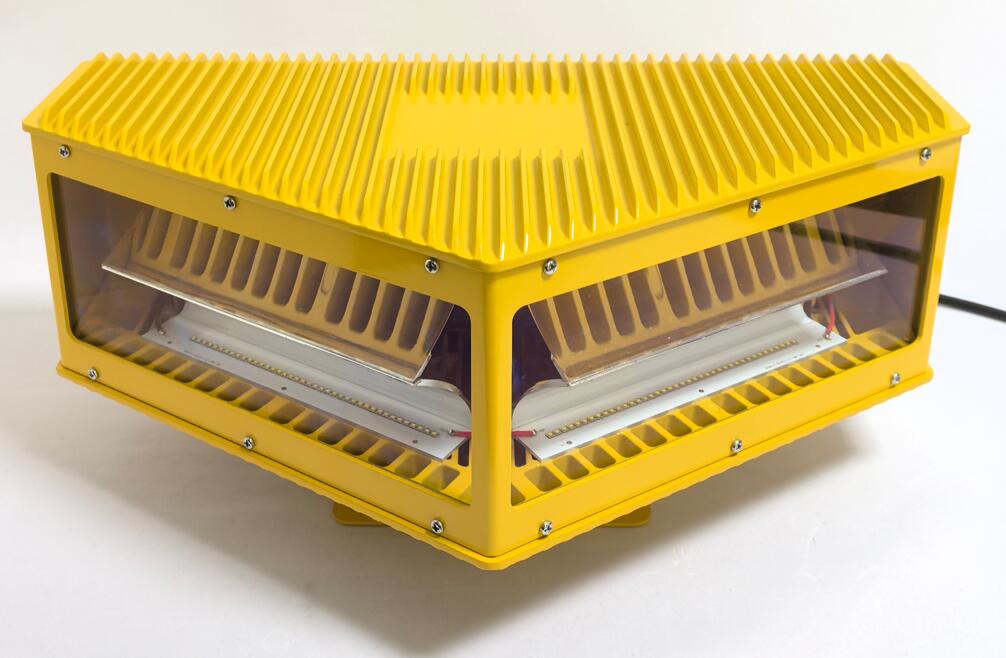Aircraft warning lights are essential for aviation safety, ensuring that tall structures are visible to pilots and preventing potential collisions. A critical aspect of their installation is determining the correct aircraft warning light height, which depends on regulatory standards, structure type, and environmental conditions. This article explores the factors influencing these heights and their importance in maintaining safe airspace.
Why Aircraft Warning Light Height Matters
The primary purpose of aircraft warning lights is to make obstacles detectable to pilots, especially at night or in poor weather. The height at which these lights are installed directly affects their effectiveness. If placed too low, they may not be visible early enough; if too high, they might not adequately mark the structure's full profile. Regulatory bodies worldwide establish strict guidelines to ensure optimal placement.
Regulatory Standards for Aircraft Warning Light Height
Different aviation authorities set specific requirements for obstruction lighting based on structure height:

1. Federal Aviation Administration (FAA) Standards (U.S.)
Structures below 200 feet (61 meters): Generally do not require lights unless near an airport.
Structures 200-500 feet (61-152 meters): Must have medium-intensity lights (red or white strobes).
Structures above 500 feet (152 meters): Require high-intensity white strobes for maximum visibility.
2. International Civil Aviation Organization (ICAO) Guidelines
Similar to FAA but may vary slightly by country.
Typically mandates lighting on structures taller than 150 meters (492 feet) in most regions.
3. Local Aviation Authority Rules
Some countries impose stricter regulations based on air traffic density.
For example, in the UK, the Civil Aviation Authority (CAA) requires lighting on structures over 100 meters (328 feet).
Types of Aircraft Warning Lights and Their Placement
The aircraft warning light height varies depending on the type of light used:
1. Low-Intensity Lights (L-810, Red Steady/Flashing)
Used on structures under 200 feet (61 meters) if near flight paths.
Mounted at the top and sometimes mid-levels of the structure.
2. Medium-Intensity Lights (L-864/L-865, Red/White Strobes)
Required for structures 200-500 feet (61-152 meters).
White strobes (L-865) for daytime, red (L-864) for nighttime.
Often installed at multiple levels to outline the structure.
3. High-Intensity Lights (L-856, White Strobes)
Used for structures exceeding 500 feet (152 meters).
Extremely bright for long-distance visibility.
Placed at the top and intermediate levels for full coverage.
Factors Affecting Aircraft Warning Light Height
Several variables influence where these lights are installed:
Structure Height & Shape – Taller or irregularly shaped buildings need more lights at different levels.
Proximity to Airports – Structures near runways may require lighting at lower heights.
Weather & Visibility Conditions – Foggy or high-traffic areas may need additional lighting.
Terrain Elevation – Structures on hills or mountains may have adjusted height requirements.
Best Practices for Optimal Light Placement
To ensure maximum effectiveness:
Follow FAA, ICAO, or local aviation authority guidelines strictly.
Use dual lighting systems (red for night, white for day) where applicable.
Conduct regular maintenance to prevent light failures.
Perform visibility tests from pilot perspectives.
The aircraft warning light height is a crucial factor in aviation safety, ensuring that obstacles are clearly marked for pilots. Compliance with international and local regulations helps prevent accidents and enhances navigation efficiency. Whether for skyscrapers, wind turbines, or telecommunication towers, proper light placement is essential for safe air travel.
By understanding these standards, engineers and aviation professionals can design lighting systems that protect both aircraft and ground structures effectively.

